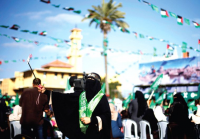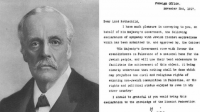
Links
Sheba Medical Centre
Melanie Phillips
Shariah Finance Watch
Australian Islamist Monitor - MultiFaith
West Australian Friends of Israel
Why Israel is at war
Lozowick Blog
NeoZionoid The NeoZionoiZeoN blog
Blank pages of the age
Silent Runnings
Jewish Issues watchdog
Discover more about Israel advocacy
Zionists the creation of Israel
Dissecting the Left
Paula says
Perspectives on Israel - Zionists
Zionism & Israel Information Center
Zionism educational seminars
Christian dhimmitude
Forum on Mideast
Israel Blog - documents terror war against Israelis
Zionism on the web
RECOMMENDED: newsback News discussion community
RSS Feed software from CarP
International law, Arab-Israeli conflict
Think-Israel
The Big Lies
Shmloozing with terrorists
IDF ON YOUTUBE
Israel's contributions to the world
MEMRI
Mark Durie Blog
The latest good news from Israel...new inventions, cures, advances.
support defenders of Israel
The Gaza War 2014
The 2014 Gaza Conflict Factual and Legal Aspects
To get maximum benefit from the ICJS website Register now. Select the topics which interest you.
How Media Partnered With Hezbolla Harvard’s cautionary tale
While the war between Israel and Hezbollah raged in Lebanon and Israel last summer, it became clear that media coverage had itself started to play an important role in determining the ultimate outcome of that war. It seemed clear that news coverage would affect the course of the conflict. And it quickly transpired that Hezbollah would become the beneficiary of the media's manipulation.
A close examination of the media's role during the 2006 Israel-Hezbollah war in Lebanon comes now from Harvard University's Kennedy School of Government, in an analysis of the war published in a paper whose subtitle should give pause to journalists covering international conflict: "The Israeli-Hezbollah War of 2006: The Media as a Weapon in Asymmetrical Conflict." Marvin Kalb, of Harvard's Shorenstein Center on the Press, Politics and Public Policy, methodically traces the transformation of the media "from objective observer to fiery advocate." Kalb painstakingly details how Hezbollah exercised absolute control over how journalists portrayed its side of the conflict, while Israel became "victimized by its own openness."
The lessons from the Harvard paper go well beyond historic analysis. Kalb's thoroughly and persuasively documented case points to the challenges to journalists in future "asymmetrical" conflicts in which a radical militia provides access only to journalists agreeing to the strictest of rules.
Journalists did Hezbollah's work, offering little resistance to the Islamic militia's effort to portray itself as an idealistic and heroic army of the people, facing an aggressive and ruthless enemy. With Hezbollah's unchallenged control of journalists' access within its territory, it managed to almost completely eliminate from the narrative crucial facts, such as the fact that it deliberately fired its weapons from deep within civilian population centers, counting on Israeli forces to have no choice but defend themselves by targeting rocket launchers where they stood. Hezbollah's strong support from Syria and Iran -- including the provision of deadly weapons -- faded in the coverage, as the conflict increasingly became portrayed as pitting one powerful army against a band of heroic defenders of a civilian population.
Gradually lost in the coverage was the fact that the war began when Hezbollah infiltrated Israel, kidnapping two of its soldiers (still held to this day) and killing eight Israelis. Despite the undisputed fact that Hezbollah triggered the war, Israel was painted as the aggressor, as images of the war overtook the context.
Israelis by the hundreds of thousands became the target of rocket fire aimed at civilian centers. Women and children, Jews and Arabs, young and old, spent more than a month living in underground shelters while nearly 4000 Hezbollah rockets rained on Israel. The coverage from Israel, however, quickly moved away from the anxiety-filled civilian areas, which were not terribly telegenic, and onto the front lines where armed, uniformed soldiers could be seen by television cameramen and reporters.
Articles on this Issue
- Pentagon Says Civil War Exists in Iraq. Now What?
- Middle East Opinion: Iran Fears Aren't Hitting the Arab Street
More on Public Diplomacy and Propaganda
Articles by this Author
By contrast, armed Hezbollah fighters were all but invisible to the media. Also invisible were Hezbollah's thousands of rockets and rocket launchers strategically positioned near schools, hospitals and apartment buildings.
Within Hezbollah territory, journalists were led through scenes of the destruction caused by Israel. Journalists rarely complained about Hezbollah's restrictions, but they frequently complained about Israel's efforts to limit coverage deemed useful to the enemy. Still, circumventing Israeli restrictions proved easy in a country like Israel, while in Hezbollah-controlled areas it proved all but impossible. Cameras enjoyed full access to civilian victims of Israel's actions, but never to the perpetrators of violence against Israel. And in Israel journalists could interview soldiers complaining about the weaknesses in Israeli tactics. On more than one occasion, Hezbollah choreographed theater for visiting journalists, with ambulances ordered to parade on command for journalists, who rarely challenged the inconsistencies in what they saw. Bloggers, for example, noticed a perfectly unharmed Lebanese man standing in a picture, not long after he had been seen being "rescued" from the crushing rubble of a building.
Before long, Hezbollah had achieved a definitive propaganda victory. The media had not only acquiesced to tell Hezbollah's version of the war, they had started contributing to the creation of the narrative, with at least one Reuters photographer altering photographs to make Israeli attacks look more damaging. And many reporters simply failed to offer much context. The study quotes the New York Times' Stephen Erlanger commenting on a satellite picture published by his paper. The picture showed a southern suburb of Beirut, which was largely destroyed. Erlanger said it "bothered me a great deal," because the image with no context failed to show that this was a small part of a Beirut, and the rest of the city was largely undamaged by the war.
According to the Harvard paper, Arab TV network Al Arabiya portrayed Arabs as the victims in 95 percent of its stories, while Al Jazeera did it in 70 percent of its reports. Arab journalists' bias against Israel is hardly surprising, but consider this: Al Jazeera's coverage portrayed Israel as the aggressor just as often as did the four main German television programs. And if you think American journalists held no bias against Israel, you may be surprised to know that "On the front pages of The New York Times and The Washington Post, Israel was portrayed as the aggressor nearly twice as often in the headlines and exactly three times as often in the photos."
The Harvard paper shows the need for journalists to brace themselves and remain vigilant when they cover conflicts between open societies on one side, and media-controlling militias on the other. These conflicts, which we will undoubtedly continue to see, demand that journalists make a greater effort to provide context and to keep from become willing collaborators with one side. Islamic militant groups, such as al-Qaida and others, have openly described their strategy of manipulating the media and winning on the "information battlefield." Hezbollah, too, had a well crafted, and ultimately successful media plan.
The challenge to keep from being used will be greatest for journalists in the field, but editors back in the newsroom also must look closely at what their organizations produce. They must be aware that their reporters on the ground are the target of media campaigns by those they cover, and that reporters can become emotionally allied with one side, as we saw last summer in Lebanon.
# reads: 196
Original piece is http://worldpoliticswatch.com/article.aspx?id=717





















